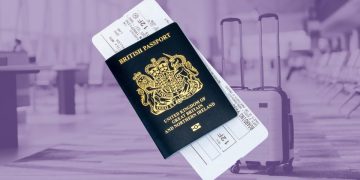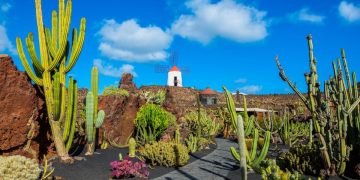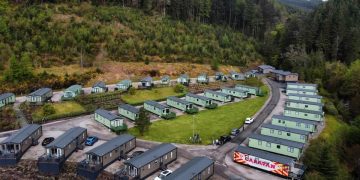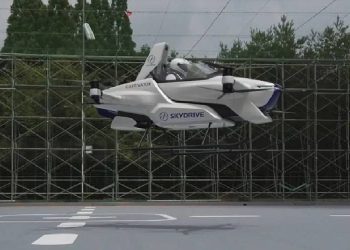Private space company Axiome sent four astronauts to the International Space Station (ISS) on June 25 (Wednesday) by Axioom-4 mission. Shubhanshu Shukla of India, who is a pilot in the Indian Air Force and is currently a group captain, is also involved in this mission. Thus, after 41 years, an Indian has been honored to be an astronaut.
Indian astronaut Shubhanshu Shukla will be at the international space station, ISS for about 14 days. During this time they will do many experiments. Under the Axiom-1 mission, he has traveled from three foreign astronauts to the International Space Station (ISS) from Florida, USA. He is the first Indian to travel to the International Space Station (ISS) in 41 years. Hungary and Poland along with India are also involved in the mission. After being postponed eight times due to technical shortcomings, everyone is now on the success of this mission. Let me tell you what is the Axiom-4 mission? Why is ISRO sending three types of algae into space? What do Indian astronaut Shubhanshu Shukla research? What is the purpose of the Axiom-1 mission?
What is Axiom-1 Mission?
Axiom-4 mission is a mission of American company Axiom space. It is being run in partnership with NASA and SPACEX. This mission is especially important for India because after a long time the astronaut of the country is set foot in space. This is the fourth mission of Axiom space. The mission has been postponed 8 times so far. Indo-Pauland-Hungary governments are also spending on it.
What will be the role of Shubhanshu Shukla in the mission?
Shubhanshu Shukla has been sent to ISS as a pilot in this mission. That is, Shubhanshu is playing an important role in the guidance of the dragon capsule through which the AXIOM-4 mission has been sent to the International Space Station (ISS). Here is the responsibility of docking the spacecraft to ISS and providing it to the astronauts safely. In addition, if this capsule faces a problem, Shubhansu has the responsibility of controlling the spacecraft and making emergency decisions. Shubhanshu plays a second-in-commission in this mission. He will be the most important person of Axiom-4 after Peggy Whitson. Under the Axiom Mission it will spend a total of 14 days in ISS.
Who plays in the mission team?
Talking about the team of Axiom-4 mission, Peggy Whitson, the former astronaut of the US NASA, is its commander while the Indian Air Force’s group captain and ISRO astronaut will be in the role of Shubhanshu Shukla Pilot. Poland’s astronaut Sloos Uznansky and Hungarian astronaut T -Bore Kapu Mission specialist. This is the first mission of three other astronauts, including Shubhanshu. This is the second mission of Peggy Whitson. All will do scientific experiments in ISS for 14 days.
What do ISRO do research in the mission
1. The seeds of crop seeds
Auspicious six types of crop seeds have taken ISS with them. During their 14 -day journey, they will collect important information about the development of this seed in subtle gravity. The purpose of this experiment will be to find alternatives for cultivation in space in the future.
1. Experiment on the use of algae
Shubhanshu has taken three types of micro algae, ie algae for their mission. They will use it to save life during long -term space mission between food, fuel and low gravity.
2- The safety of the residue in difficult situations
In the Axiom-4 mission, there will be tests on auspicious tardigrade (a kind of small organism that can keep themselves normal even in extreme conditions). This will try to find out which bacteria can be safe in the dangerous environment of space.
2- On the weakening of the muscles
Another experiment will try to understand how the muscle mass in humans decreases in zero gravity and how to cope with. Generally astronauts complain of muscle weakness, the loss of muscle mass during long -term mission. In such a situation, the effect of digestive supplements will be seen on astronauts.
5- Impact on Eyes
A study will also be performed on the effect of subtle gravity on the eyes during the Axiom-4 mission. This research will reveal the extent to which astronauts’ eyes are affected in space. In addition, it will be seen how much a person’s stress and alertness is affected.
6- Nutrition quality of different crops
An attempt will be made to germinate some seeds during the mission. Their nutrients will also be measured so that efforts will be made to understand the difference in the nutrition of crops grown on earth and the nutrition of crops grown in zero gravity. This experiment will reduce the burden on astronauts in the future because if the crop is equal or more nutritious in space, it will be tried to grow there.
7- The use of cyanobacteria in urea and nitrate
This will be one of the most difficult experiments of Shubhanshu Shukla. In fact, the availability of food, water and oxygen in space has been a major problem. Especially for long -term missions. In this case, scientists have long been trying to organize these items on ISS. Scientists are now trying to see if using cyanobacteria in urea and nitrate, food and oxygen can be produced together in the zero gravity of space. It is noteworthy that both urea and nitrate are important for cooking food.
What else was sent to the Shubhanshu Mission?
It has been said that some more things have been carried out in Shubhanshu Axiom-4 mission. However, his information has been kept secret. Meanwhile a soft toy has been sent to the mission that will be a swan called Joy. The reason is that zero gravity will begin when the spacecraft leaves the earth’s orbit and reaches space. This soft toy is being sent to indicate this, which will start flying on its own due to lack of gravity force.
ISRO says that Shubhanshu will be part of an interactive session with Indian students on some occasions while staying in ISS. He will share his own experiences about the life of the space station. The purpose is to increase the interest of Indian students, engineers and scientists.
What is the purpose of the Axiom-4 mission?
The purpose of this mission is to promote private space travel. Also, the commercial space headquarters plan is to proceed. Various scientific experiments will be performed in microgravity, including biology, agriculture, human health and material science during the mission. Indian astronaut Shubhanshu Shukla will perform seven Indian experiments such as the study of cyanobacteria, muscle regeneration and crop cultivation in space.
This mission will test and exhibit new technologies that will be important for future scope mission such as moon and Mars travel. In addition, this mission provides an opportunity to participate in international space research for countries like India. This is an important step for experience and data collection for ISRO’s Gagnian Mission.
Axioom space is intended to work and operate private space stations. Axiom-4 is a step in this direction that promotes private sector space travel. The adaptation, health and cognitive effects of the human body in microgravity will also be studied during this mission that is important for long -term space mission.
































